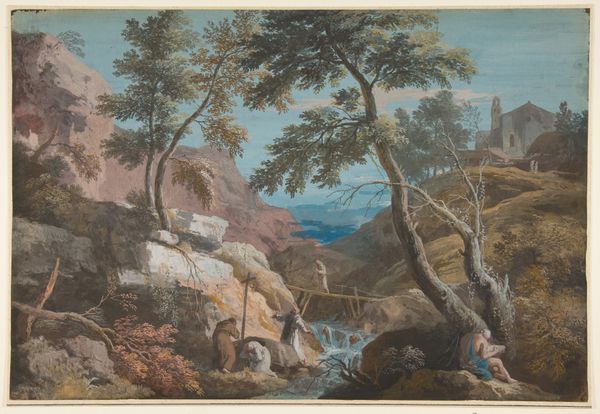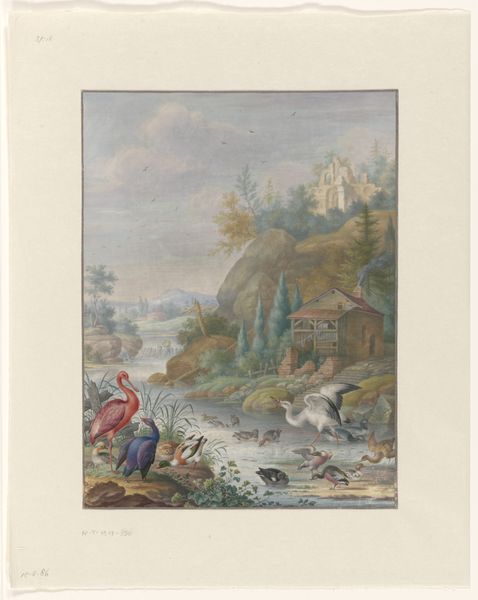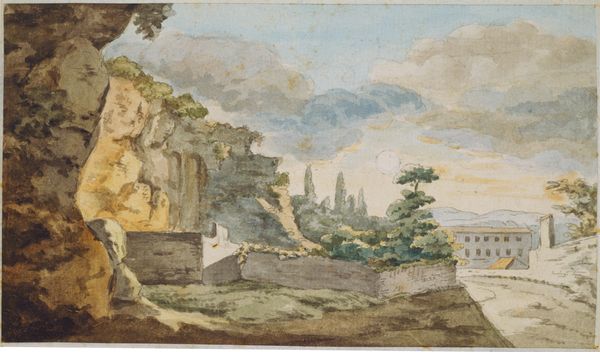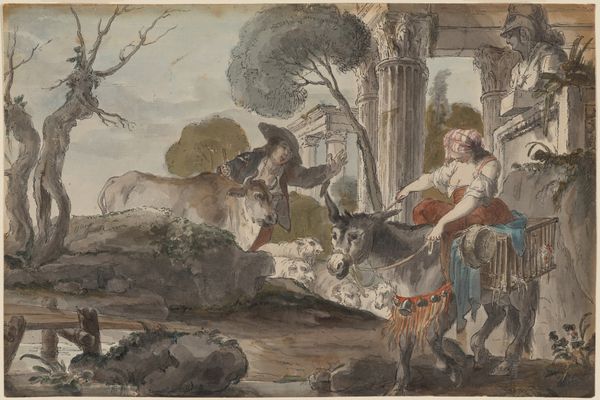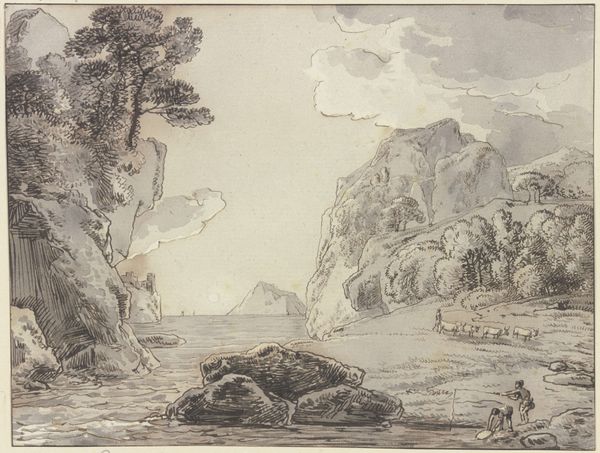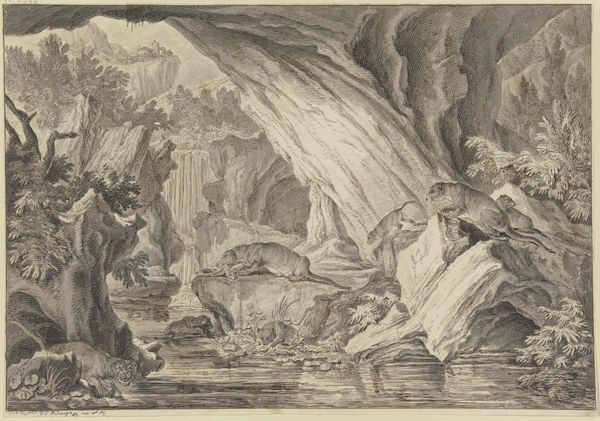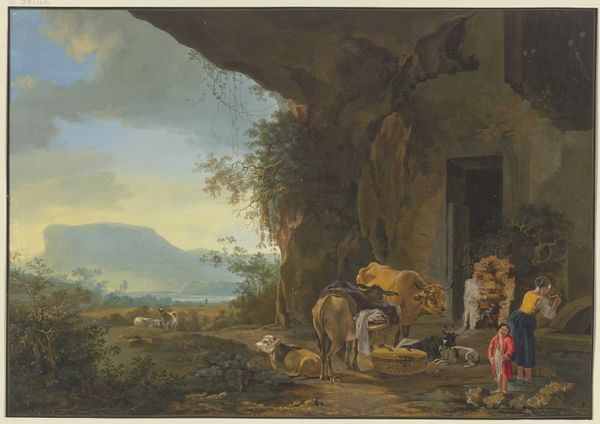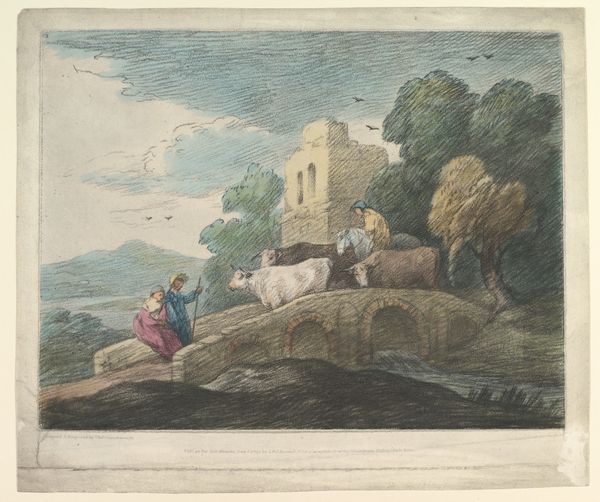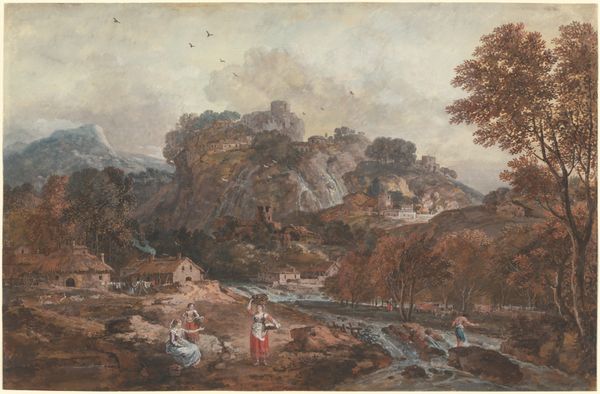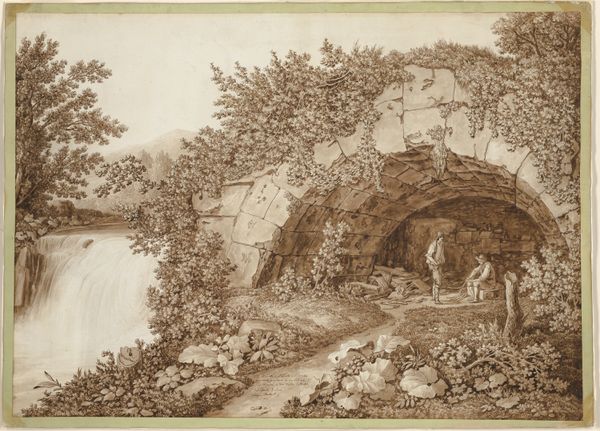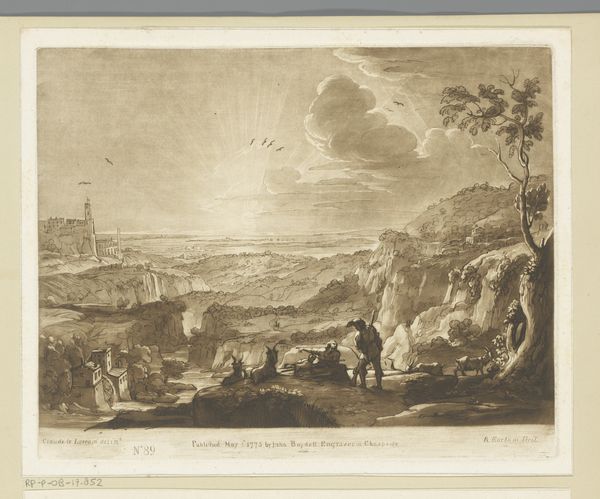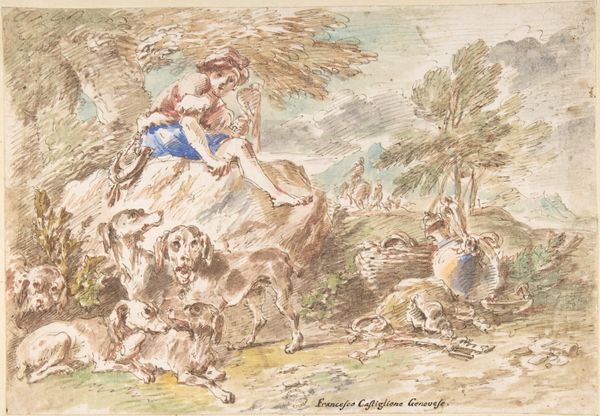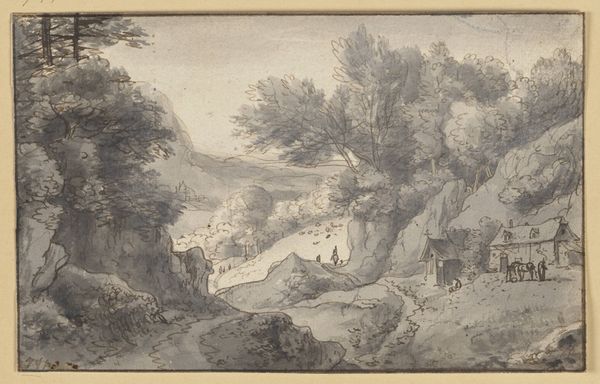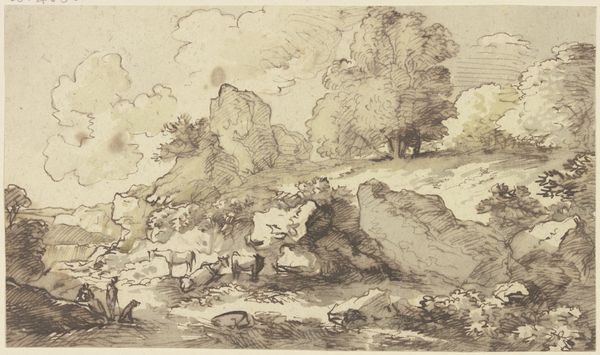
Hirten auf Felsen, eine Hirtin liegt vor einem Esel, vorn Kühe, Schafe und Ziegen, im Hintergrund Ruinen mit einer Brücke 1803
0:00
0:00
drawing, tempera, watercolor
#
drawing
#
16_19th-century
#
tempera
#
landscape
#
figuration
#
oil painting
#
watercolor
#
german
#
romanticism
#
genre-painting
#
watercolor
Copyright: Public Domain
Johann Friedrich Morgenstern painted this scene of shepherds among ruins, evoking a specific mood. The ruins themselves become symbols, fragments of a past grandeur, a melancholic memento mori amidst the pastoral life. Consider the reclining shepherdess and her flock. This motif echoes classical antiquity, where pastoral scenes symbolized an idealized, simple life, close to nature. It reappears throughout art history, morphing with each cultural shift. The shepherdess, a figure linked to fertility and care, reminds us of similar figures in Renaissance paintings, where the female form embodies nature's bounty and the nurturing spirit. But here, the presence of decay—those crumbling stones—introduces a tension. It’s as if Morgenstern is reminding us that even in the most serene settings, time and entropy exert their relentless power. This duality resonates deep within our collective memory. The ruins may tap into our subconscious awareness of the transient nature of existence, engaging us on a profoundly human level. The cyclical return and evolution of these symbols demonstrate art's power to continually re-evaluate our understanding of ourselves and the world.
Comments
No comments
Be the first to comment and join the conversation on the ultimate creative platform.
